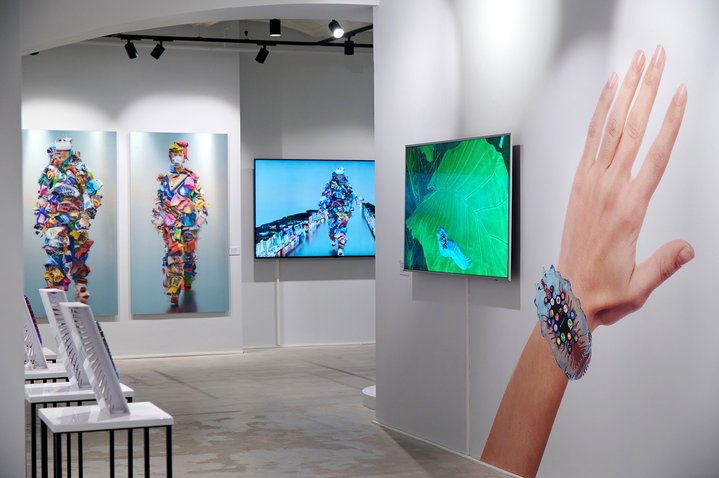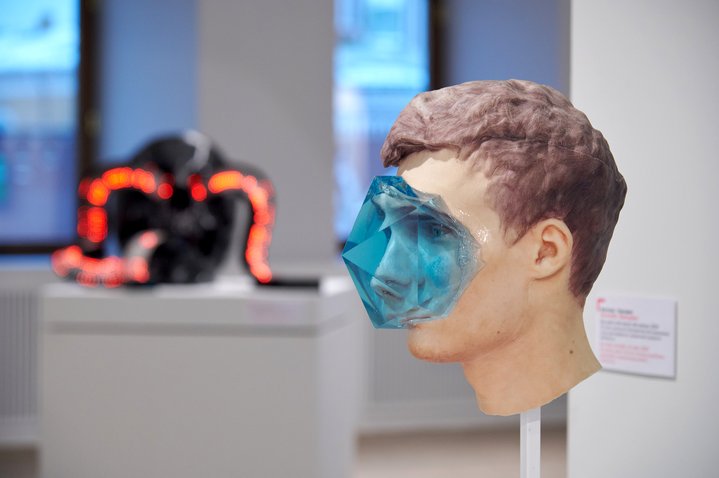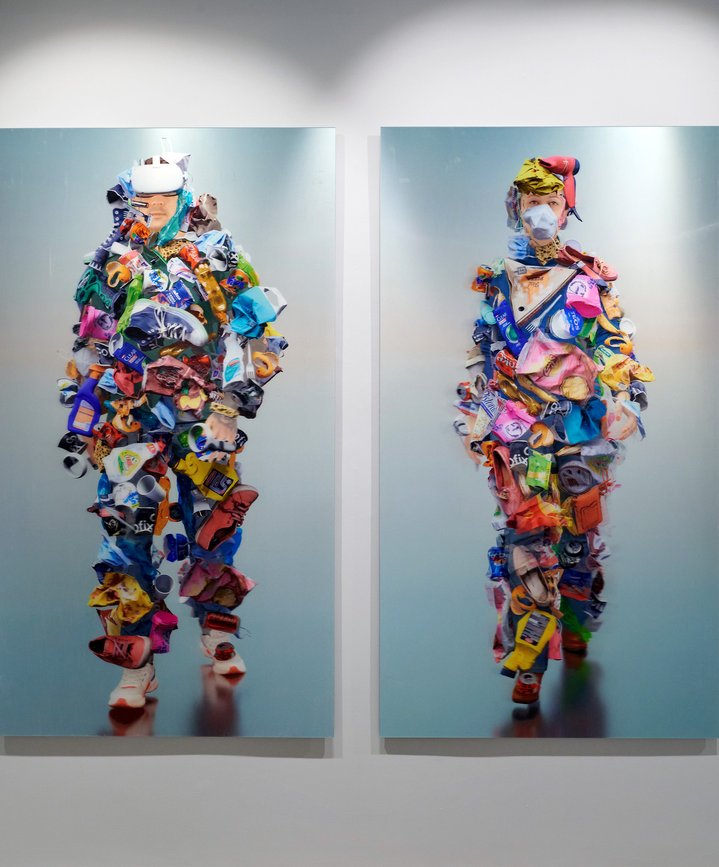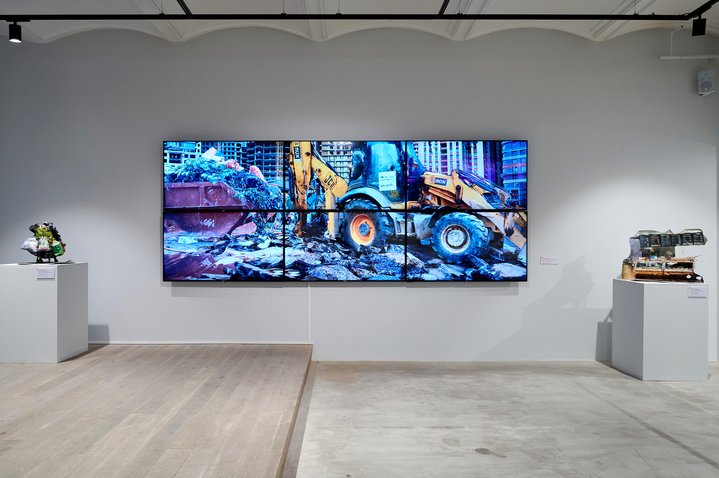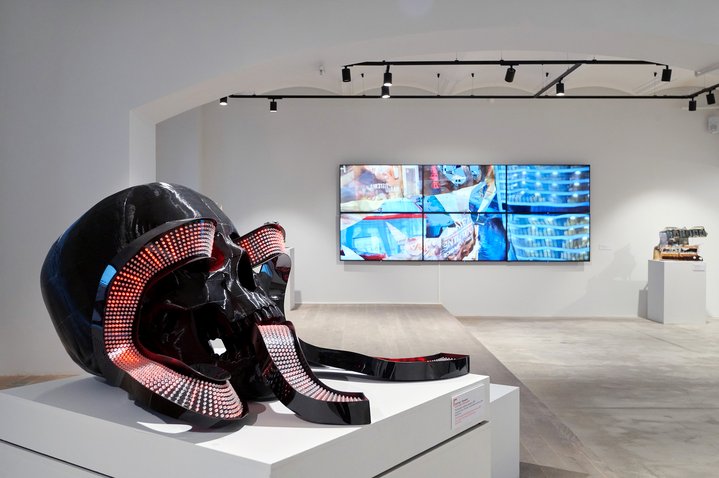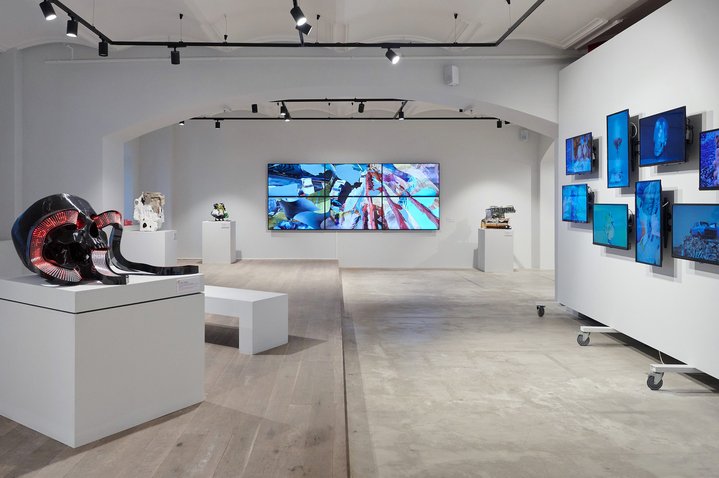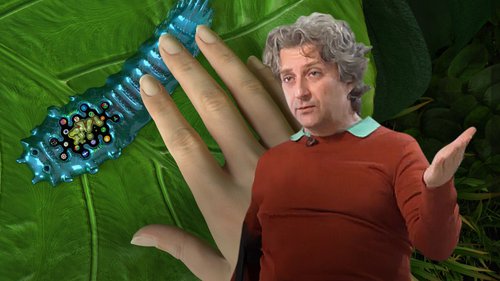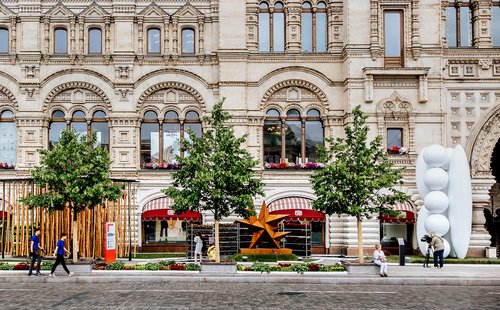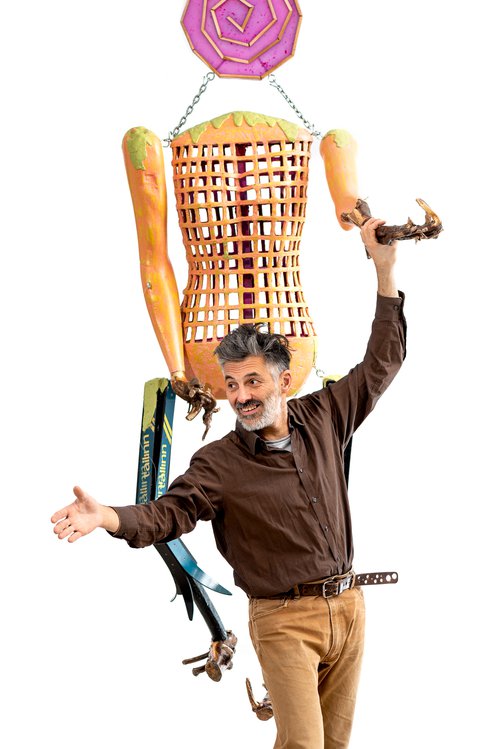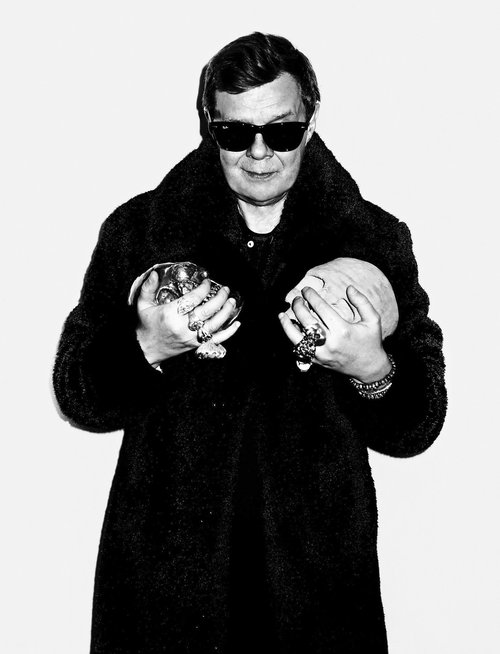Aristarkh Chernyshev. MetaConsumer, 2022. Exhibition view at GUM-Red-Line gallery
New Year shoppers face Aristarkh Chernyshev’s consumerist showdown
Russian new media artist critiques contemporary, consumer society with his scathing visual quips at his latest solo show in Moscow at the GUM-Red-Line gallery housed inside an upmarket shopping mall.
There is not one museum of contemporary art anywhere in the world which can boast the kind of footfall of a shopping centre. On the third floor of GUM, Moscow’s historical shopping arcade facing the Kremlin on Red Square, the GUM-Red-Line gallery is currently hosting an exhibition of the ‘father’ of Russian media art, Aristarkh Chernyshev (b.1968). Some Christmas shoppers, otherwise in a daze, browsing around the smart boutiques, find themselves momentarily distracted and walk up to the exhibition space, blinging with shiney TV screens, shiney LEDs and eccentric, multi-facetted constructions which sparkle.
A recent work, ‘The Throne of MetaConsumer’, is set in the very epicentre of consumption. The sculpture is 3D printed using the artist's full colour texturing technology, made especially for this retrospective, which includes work created over the past five years. For its intricate embossing, the throne looks uncomfortable. Its surface is formed by the twisted images of products from different brands.
"New media is not just about digital works. New materials are emerging. New ways of creating forms are emerging. 3D printers are evolving. There are new possibilities arising that didn't exist before. So new media also produce products, and somewhere in their conservatism they merge with the old media," is how Chernyshev summarizes the current situation. His throne is a dualistic object made of traditional form yet with a critical content.
It is difficult to even get into GUM just before the New Year. Hoards of visitors form a queue in front of the entrance to the shopping mall which is closest to the Kremlin. It is difficult to believe that they are all there to shop at Etro or Ferragamo, mostly they are following the Soviet tradition of going to GUM to look at the festive decorations. Queues for specially branded ice cream stretch from the the indoor fountain at the very centre of the mall, to the ice-cream stalls, each of them several tens of people long.
Aristarkh Chernyshev offers up art which is on the verge of entertainment. He does not stop the public from finding pleasure in it, or interacting with it, but at the same time his art focuses on the problems of our time. Overproduction of rubbish, bio-digital technology, and electronic rituals are among his themes. The titles of the individual works or series play with linguistic clichés and tell us what the artist is more interested in, rather than describing the content of the works. There is ‘Economics of Promises’ from 2019, ‘Toxic Assets’ from 2018-2020, and ‘Final Update’ from 2019. His political statement is hidden beneath a bright outer shell of games and gadgets and sold to the viewer as a delicious visual experience. A trip to the amusement room turns into a reflection on the foundations of a quasi-future.
Aristarkh Chernyshev is one of a number of Moscow artists who have created the vogue of tomorrow. Originally from Voroshilovgrad (now Luhansk, Ukraine), in the early nineties he settled in a famous Moscow squat, a commune on Petrovsky Boulevard, run by another native from the eastern Ukraine, Sasha Petlyura (Alexander Lyashenko, b. 1955). Russia's first festival of experimental video and computer animation was held there. It was here that in the midst of the picturesque ruins of the Soviet country, the art of new technologies was born.
"Media art itself is so diverse, there are so many branches in it and it is developing so fast... but still, when you see a work in this medium, you can identify it. There are a lot of different techniques, there is different software and different technology. It is hard to frame it", Aristarkh reflects today, sitting in his new two-storey high-tech studio in a post-industrial area of Moscow, between an abandoned railway line and a successful film factory.
Graduating from the Bauman Moscow Higher Technical School in 1991, Chernyshev was pioneering at a time when there were no neural networks, social networks or the internet. The few users there were communicated with each other through computers via telephone lines, and the computer itself looked like a gimmick designed for nerds. Satellite telephones were considered a sign of the ‘new Russians’ (nouveau riches) and a video camera or video recorder was as expensive as a deposit for a flat in the Soviet capital. Back then, it was hard to predict the rise of media art, which in Nineties Russia seemed more like an appendix, a laboratory project, a by-product of the Western art industry. Today Aristarkh Chernyshev shows his work in the heart of Moscow’s glitz and glamour.
This is not only a sign of his success as an artist, but also the fate of media art, which has experienced explosive growth over the past three decades, directly linked to technical progress. "Some effect that seemed like an absolute badger yesterday can now be realised by anyone on their smartphone," says Chernyshev. "Working in 3D is a manual job. You sit around, fiddling about – plugins, dots, moving arrays, textures, topology – it's all manual, just specific, and then, all of a sudden, boom! – You get a neural network such as Stable Diffusion or Midjourney, and it generates a picture according to a textual description, that will be hard as hell to generate in 3D – you have to build the scene, design the lighting, select the materials, and that will keep you busy for a week, just to create one single image. And midjourney generates a picture for you in seconds!".
"Previously, the threshold to enter media art was rather high. You had to know how to program or be good at electronics, and now this threshold is being lowered, because you don't need much knowledge. There's already node programming, GPT writes program code and entire blocks on demand," the artist says. Unstoppable technological growth constantly changes the goals of media art and redefines the very essence of an artist's work in it. The goal becomes ever more important than the means.
Aristarkh Chernyshev. MetaConsumer
Moscow, Russia
December 23, 2022 – February 10, 2023






